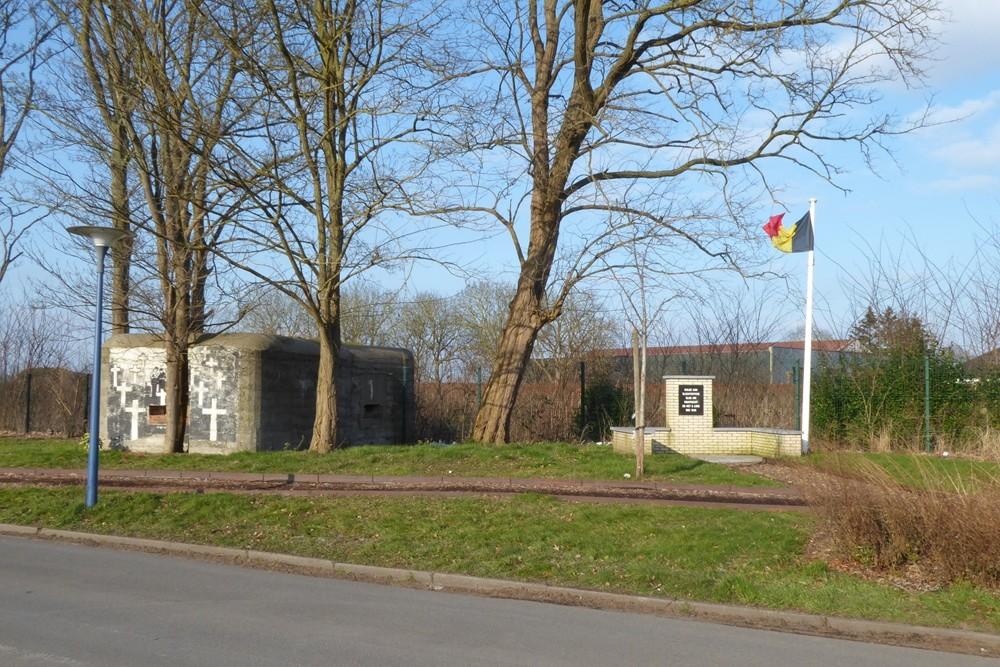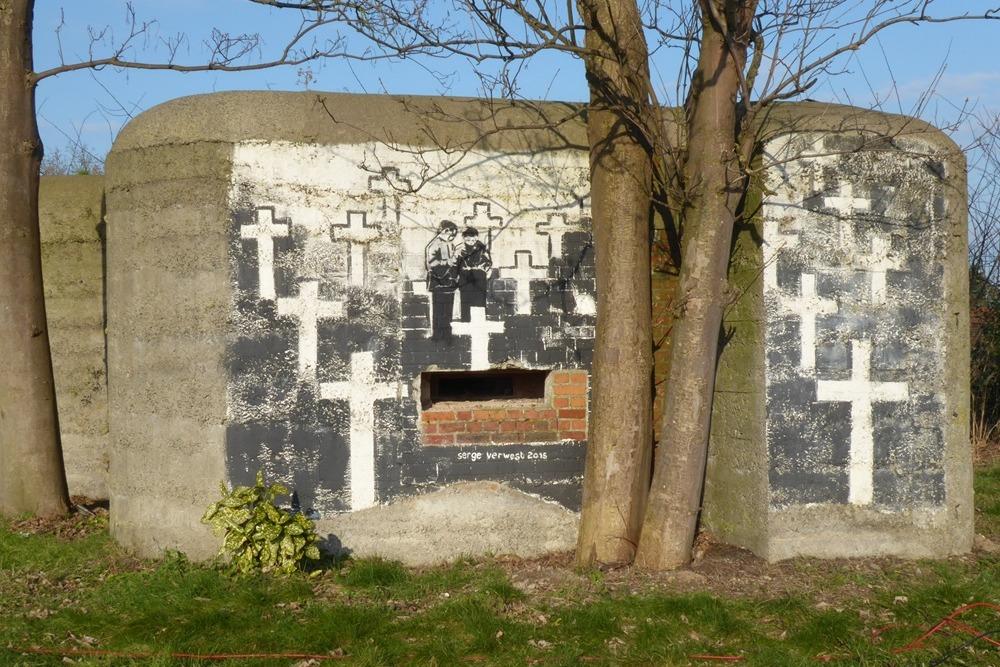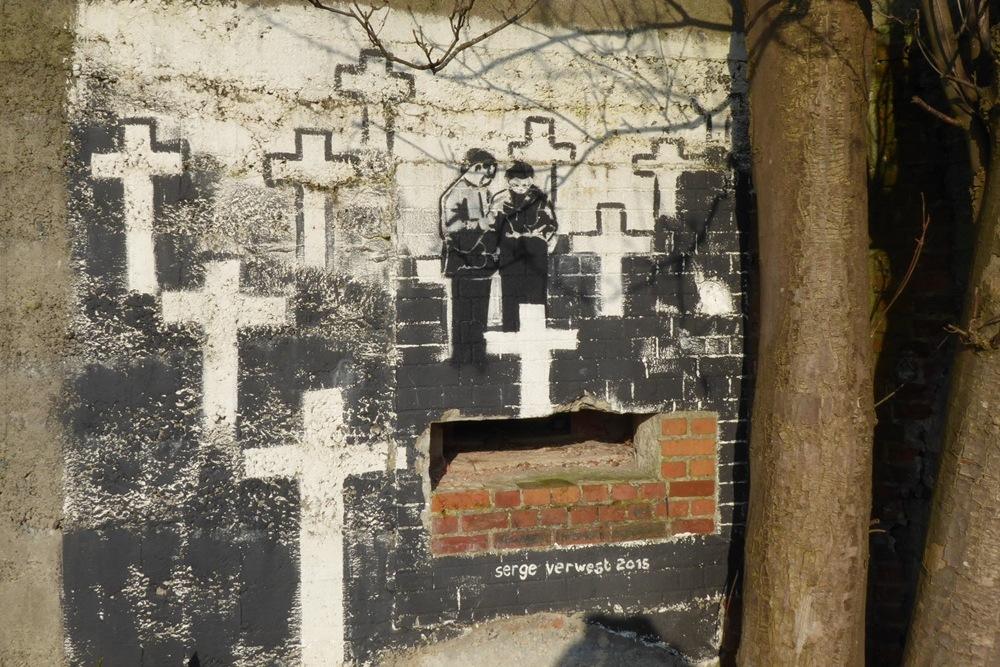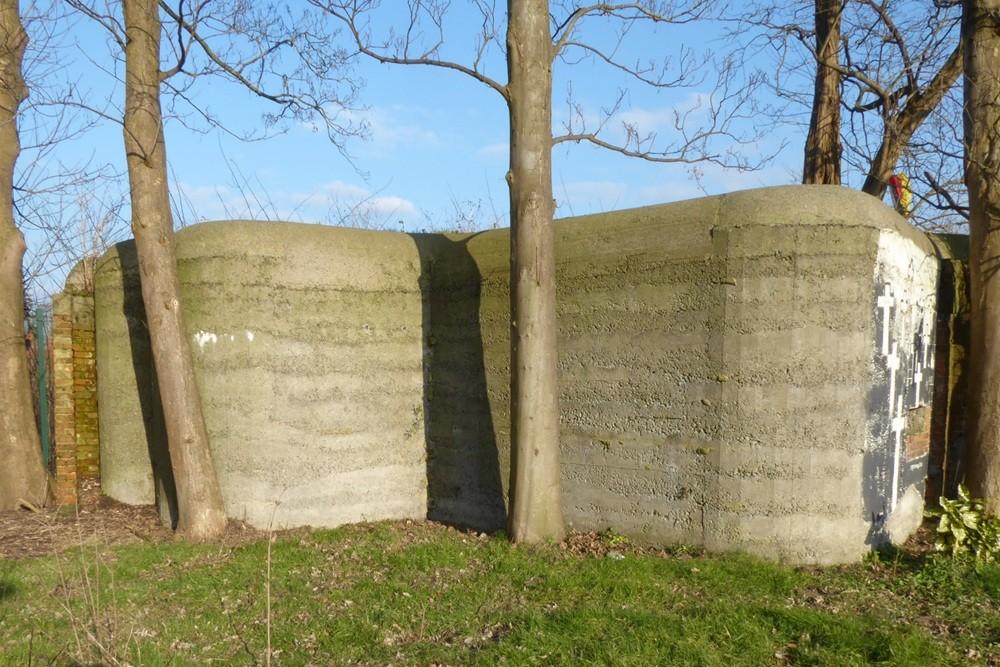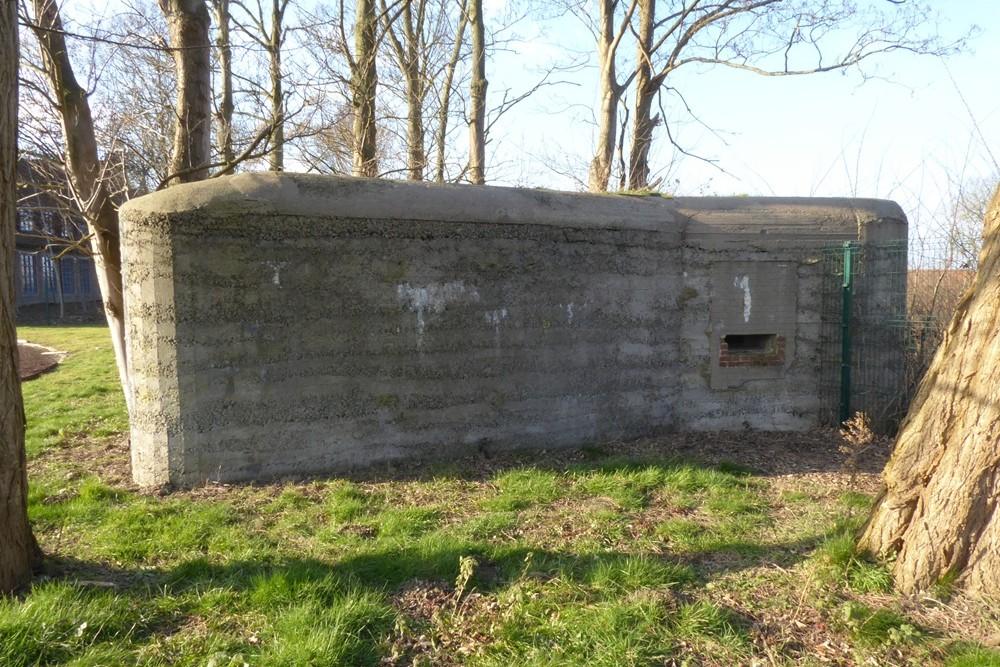Bunker Belt Bruggenhoofd Gent – Frontline Bunker A40
Belgian bunker, part of the Ghent Bridgehead. This defensive position was constructed between 1934 and 1938, eight kilometres south of Ghent. Its construction was part of the fortification policy that Belgium pursued after the First World War.
The actual bridgehead consisted of two resistance nests – Betsberg and Muntekouter – and three strong points – Semmerzake, Eke and Astene.
The resistance nests and strong points were connected to each other by a curtain consisting of three defence lines.
There were 19 bunkers on the Wetteren territory, of which 8 have been demolished. Of the remaining ones, several are on private property or in the industrial zone.
A40 was the last frontline bunker between Betsberg and the Brussels-Ostend railway line, right next to the railway line. It was located in the front garden of the Mariagaard school complex and was positioned at an angle with bunkers A38 (1090 m) and A39 (425 m - demolished).
The first loophole was aimed at the Oosterzelesteenweg. The second was positioned in combination with one of the loopholes of Av13 (140 m) on the other side of the railway line.
The bunker was completely walled in brick with a number of black brick rows at the bottom that gave the appearance of a black plinth. It was covered with mechanical red tiles. The loopholes were hidden behind wooden shutters, there were also a few false windows with an extra false window along the side of the railway embankment.
The whole thing looked like a transformer house on the edge of the railway embankment.
The bunker consisted of two rooms positioned at an angle and connected to each other and an airlock. Each room was equipped as standard for the installation of a Maxim machine gun but also for Hotchkiss or Colt machine guns.
Bunker A40 was heavily involved in the fighting of May 1940 and still bears traces of projectile impacts both externally and internally. It was the last on the line to offer resistance.
It is likely that many Germans were killed here, which will have been the reason for the German cemetery in the front garden of the then agricultural school where the bunker was also located.
The site and the school were used from 1943 as the SS school Kwatrecht - Reichschüle Flandern for the Hitler Youth.
In 2015, the bunker was painted on the loophole by local plastic artist Serge Verwest on the occasion of the commemoration of "75 years of May 1940 in Kwatrecht".
Extensive information about this bunker belt can be found on the site Bunkergordel Bruggenhoofd Gent. It also contains photos, plans and technical data of the bunkers. A map shows the locations per municipality.
Do you have more information about this location? Inform us!
Source
- Text: TracesOfWar
- Photos: Marie-Christine Vinck
Nearby
Museum
Point of interest
- Institute Mariagaard Kwatrecht - Kwatrecht (Wetteren)
- Halve Maanroute – information board 3, Battle of Gijzenzele - Gijzenzele (Oosterzele)
- Halve Maanroute – information board 1 Gijzenzele - Gijzenzele (Oosterzele)
Monument
- Memorial 5th Line Regiment Kwatrecht - Kwatrecht (Wetteren)
- Memorial 5th Line Regiment Kwatrecht - Wetteren
- War Memorial Gijzenzele - Gijzenzele (Oosterzele)
Cemetery
- Belgian War Graves Wetteren-Kwatrecht - Kwatrecht (Wetteren)
- Belgian Graves Veterans Wetteren Kwatrecht - Wetteren
- Belgian War Grave Belgisch Gijzenzele - Gijzenzele (Oosterzele)
Remembrance Stone
- Stumbling Stone Wanzelesteenweg 13 - Wichelen
- Stumbling Stone Stationsstraat 30 - Wichelen
- Stumbling Stone Wettersestraat 25 - Wichelen
